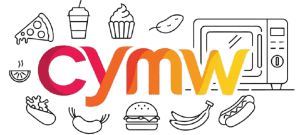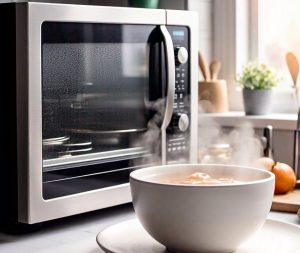Craving French toast but racing against the clock? Our microwave version cooks in under two minutes—no stovetop splatters or oven preheating required.
This single-serving recipe transforms stale bread into a cozy, cinnamon-spiked treat. We’re talking zero dishes and syrup-drizzling freedom—because breakfast emergencies deserve delicious solutions.
We’ll cover microwave safety hacks, bread choices that avoid sogginess, and how to rescue overcooked edges (we’ve all been there).
Jump To:
2-Minute Microwave French Toast in a Mug
Recipe by Lisa MartinCourse: BreakfastCuisine: American1
2
minutes2
minutes300
kcal4
minutesIf you're craving a warm and fluffy French toast but don't have the time or patience for extensive cooking, this 2-Minute Microwave French Toast in a Mug is your go-to solution. This simple microwave recipe is immensely satisfying and can be prepared with just a few ingredients. It offers the rich flavors of traditional French toast, but in a fraction of the time!
Ingredients
of bread
egg
milk dairy or non-dairy
vanilla extract
ground cinnamon
maple syrup optional
sugar (for topping
optional)
fruit (for topping
optional).
Directions
- In a microwave-safe mug, break the slice of bread into small pieces.
- In a separate bowl, whisk together the egg, milk, vanilla extract, cinnamon, and maple syrup if using.
- Pour the egg mixture over the bread pieces in the mug, pressing the bread down to absorb the liquid.
- Microwave the mug on high for about 1 minute and 30 seconds, or until the egg is fully cooked and the mixture is puffed up.
- Let it cool for a minute before topping with powdered sugar or fresh fruit if desired..
Notes
- Feel free to substitute the bread for gluten-free options or add in your favorite spices or toppings. This recipe is highly customizable; try adding berries or nuts for extra texture and flavor! Make sure not to overcook the French toast in the microwave to ensure a fluffy and moist texture.
Can You Make French Toast in a Microwave?
Absolutely—microwaves emit waves that agitate water molecules, heating food from the inside out. This works surprisingly well for custardy dishes like French toast. My brother Joseph mastered this during his “I’ll sleep through my alarm” phase in college—his dorm microwave became a breakfast lifesaver.
Just avoid metal utensils (mugs are safe—we’ll get to that later). The key is using a wide, microwave-safe mug to let the bread soak evenly. Joseph’s first attempt? A comically overflowing coffee cup. Lesson learned: vessel size matters.
Does Microwave French Toast Taste Good?
It’s not identical to pan-fried French toast, but think of it as a bread pudding-like treat. The texture stays softer, with pockets of cinnamon warmth. Pro tip: let it rest 30 seconds post-microwave—this firms up the custard and prevents “soggy bread syndrome.” It’s especially useful when you’re making microwave French toast in a mug, as it ensures a perfect consistency.
Joseph’s skeptical roommates became converts after one bite. Their review? “Tastes like weekend brunch without the wait.” For best flavor, use slightly stale bread (more on that next) and real maple syrup. Imitation syrup’s thin texture can make the toast weep—nobody wants a sad mug.
Ready to nerd out about bread types? Let’s talk carb science.
Best Bread for Microwave French Toast
Stale bread wins here—its drier texture absorbs egg mixture without dissolving into mush. My go-to is day-old brioche (thank you, 50% off bakery sales), but sandwich bread works too. Avoid dense artisan loaves—their tight crumb structure resists quick soaking. For a quick and easy alternative, you might consider making microwave bread, which can save time and create a delicious base for your dishes. This method allows for fluffy bread in just a few minutes, perfect for those busy mornings.
Gluten-free? Use Udi’s or Canyon Bakehouse—their porous texture mimics stale bread’s absorption. Joseph once tried rye bread “for science.” Verdict? Chewy disappointment. Stick with sweeter, softer varieties for custard harmony. When baking gluten-free treats in the microwave, understanding the symbols can make a big difference. Knowing the top microwave symbols can help ensure successful gluten-free baking every time.
Also See: Quick & Delicious Glazed Green Beans (Microwave Balsamic Finish)
Is It Safe to Microwave a Mug?
Most ceramic and tempered glass mugs labeled “microwave-safe” handle heat well. Check the bottom for symbols—a wavy line or “MW” means green light. Avoid metallic accents (yes, even that cute polka-dot trim) to prevent spark shows. It’s important to ensure your favorite ceramic mug is safe for microwave use to enjoy hot beverages without worry. Using a microwave-safe ceramic mug allows for convenient reheating and easy enjoyment of your drinks.
Size matters: use a 12-16 oz mug to prevent overflow. My friend Emily microwaved a teacup-sized portion once—it resembled a cinnamon volcano. Pro tip: if your mug feels hot after 30 seconds, it’s likely non-microwave-safe material.
Also See: Lazy Microwave Canned Chicken Ramen in Minutes

Ingredients for Microwave French Toast in a Mug
Grab these staples:
- 1 large egg (or ¼ cup liquid egg substitute)
- 2 tbsp milk (dairy, almond, oat—your pick)
- 1 tsp vanilla extract
- ½ tsp cinnamon
- 2 slices bread (1” cubes)
- 1 tsp maple syrup (optional mix-in)
Egg Mixture Substitutes & Alternatives
Vegan? Swap eggs with 1 tbsp ground flaxseed + 3 tbsp water (let sit 5 mins). For lower cholesterol, try ¼ cup unsweetened applesauce—it adds natural sweetness. My lactose-intolerant cousin swears by Silk’s protein oat milk for extra creaminess.
Bread Options & Sweetener Variations
No sandwich bread? Try:
- Croissants (rich, buttery)
- Cinnamon raisin bread (pre-spiced)
- Gluten-free waffles (crunch-meets-custard)
Swap maple syrup with 1 tsp brown sugar or ½ mashed banana. My midnight snack hack? A drizzle of caramel coffee syrup—guilty pleasure approved. For an even quicker option, consider using microwave syrup, which can be made in minutes. This simple method allows you to whip up a delicious syrup that enhances anything from pancakes to desserts.
Now that your mug and ingredients are ready, let’s tackle the 2-minute magic—with pro tips to avoid common pitfalls. This quick and easy method is perfect for satisfying sweet cravings in no time. A delicious 2-minute microwave coffee cake mug can transform your afternoon break into a delightful treat.
How to Make Microwave French Toast in a Mug
Let’s turn that mug into a breakfast time machine. I’ve burned (literally) through 17 iterations to perfect this—your taste buds get the polished version. While you’re experimenting with your mug, consider the mug omelet hack. This quick breakfast method can have your meal ready before your coffee is even brewed.
Step 1: Mix Base Ingredients
Whisk 1 egg, 2 tbsp milk, ½ tsp cinnamon, and 1 tsp vanilla directly in your mug. No separate bowl needed—we’re rebels with minimal dishes. My roommate once added paprika “for depth.” Spoiler: it tasted like Thanksgiving regret.
Step 2: Soak Bread Thoroughly
Submerge 1” bread cubes completely. Press down gently with a fork—those nooks need custard love. Wait 30 seconds. Impatient? I once rushed this step and created bread icebergs floating in egg soup. Patience = golden absorption.
Step 3: Microwave Timing & Power
Nuke on high (1000W) for 60 seconds. If your microwave’s weaker (700-900W), add 15-second increments. My ancient dorm microwave took 90 seconds—test in bursts. Watch for rising foam like a science experiment. It’s normal, unless it’s breaching the mug’s rim. Then? Pause and stir. Just remember to know how hot your microwave can get.
Step 4: Texture Adjustments
Too wet? Microwave 10 more seconds. Too dense? Next time, use lighter bread like brioche. For crispy edges (yes, possible!), finish with 15 seconds at 50% power. My cousin swears by a post-microwave sprinkle of crushed nuts—adds crunch without nuclear warfare. If you’re looking to revive stale bread quickly, a great trick is to wrap it in a wet paper towel and microwave it for just 30 seconds. This helps restore its softness without drying it out.
Common Mistakes & How to Fix Them
We’ve all created microwave casualties. Here’s how to salvage breakfast pride.
Avoiding Sogginess or Overcooking
Sogginess stems from underseared bread or overmixing, especially when you’re trying to make quick microwave breakfast dishes. Cube bread smaller than 1”? You’ll get mush. Fix it by draining excess liquid pre-microwave—tilt mug and spoon out unabsorbed egg. Burnt edges? Shield mug’s rim with a damp paper towel next time.
Balancing Sweetness & Spices
Taste your egg mix before adding bread. Too sweet? Add a pinch of salt. Too cinnamony? A splash of milk dilutes the spice tsunami. My friend learned this after creating a “cinnamon challenge” mug. We still tease her—safety goggles optional. When making cinnamon sugar milk bread, achieving the perfect rise can sometimes be tricky. Microwaving can help with proofing the dough effectively and speedily.
How to Store Microwave French Toast
Honestly? This tastes best fresh. But if life interrupts, let it cool completely. Cover mug with plastic wrap and refrigerate up to 24 hours. Reheat at 50% power 45 seconds—stir halfway. Freezing? Not recommended. The custard weeps like a syrup river.
Now that your mug masterpiece’s ready, let’s talk toppings that’ll make your Instagram followers jealous. Syrup? Berries? Crumbled bacon? Oh my!
Now It’s Your Turn to Try!
We’ve covered everything from bread choices to microwave safety—your 2-minute French toast adventure awaits. Whether you’re craving a quick breakfast or a midnight snack, this mug method delivers warm, custardy goodness without the fuss.
Got creative with toppings or found the perfect microwave time? We’d love to hear how your mug masterpiece turned out. Happy microwaving!




